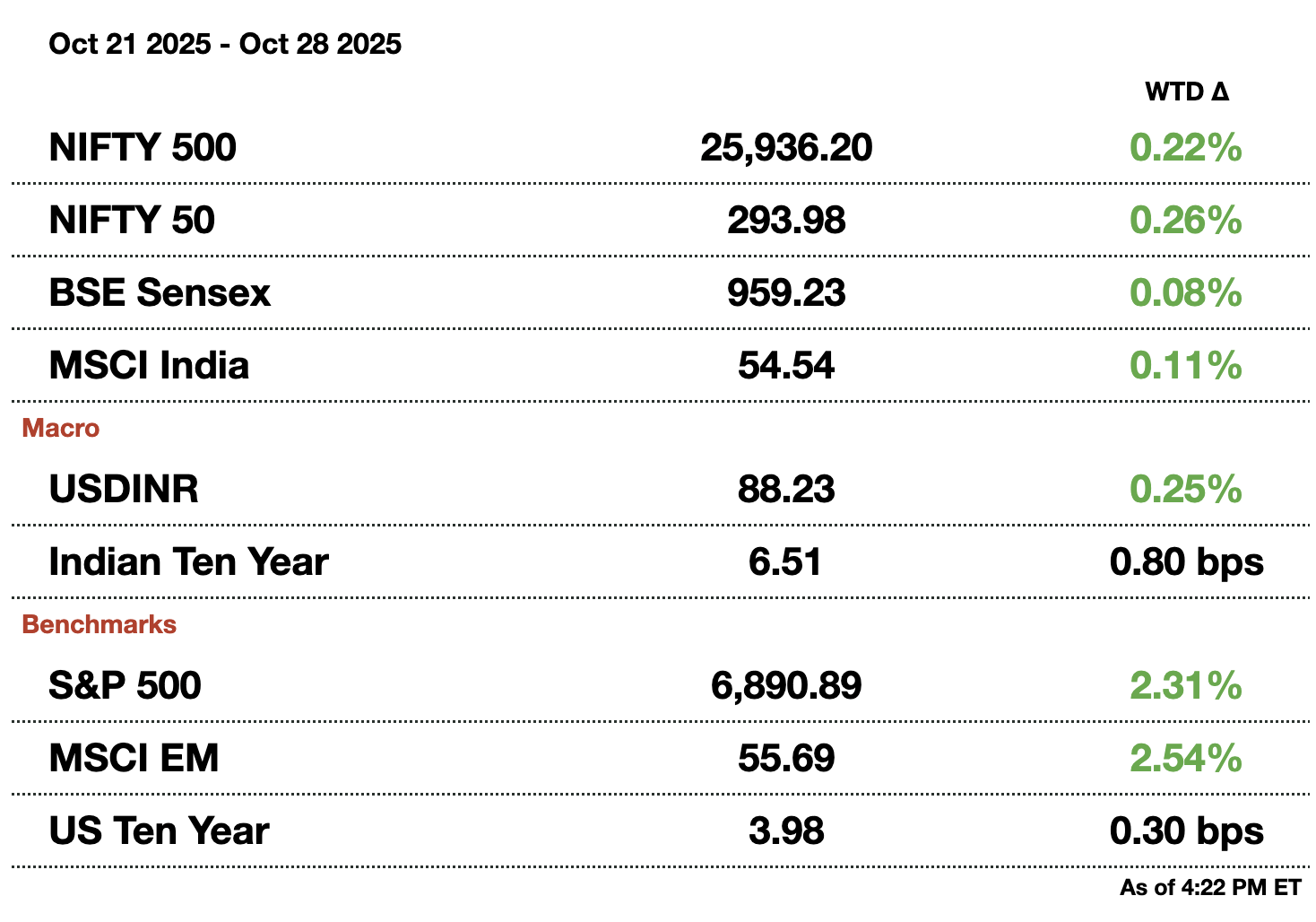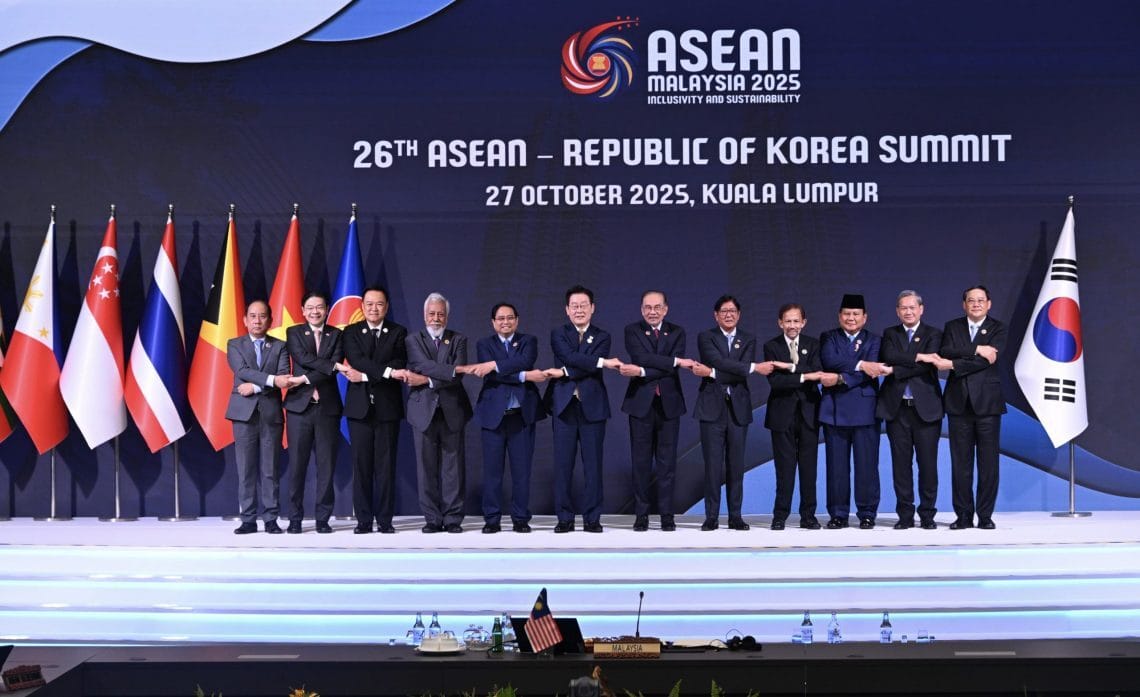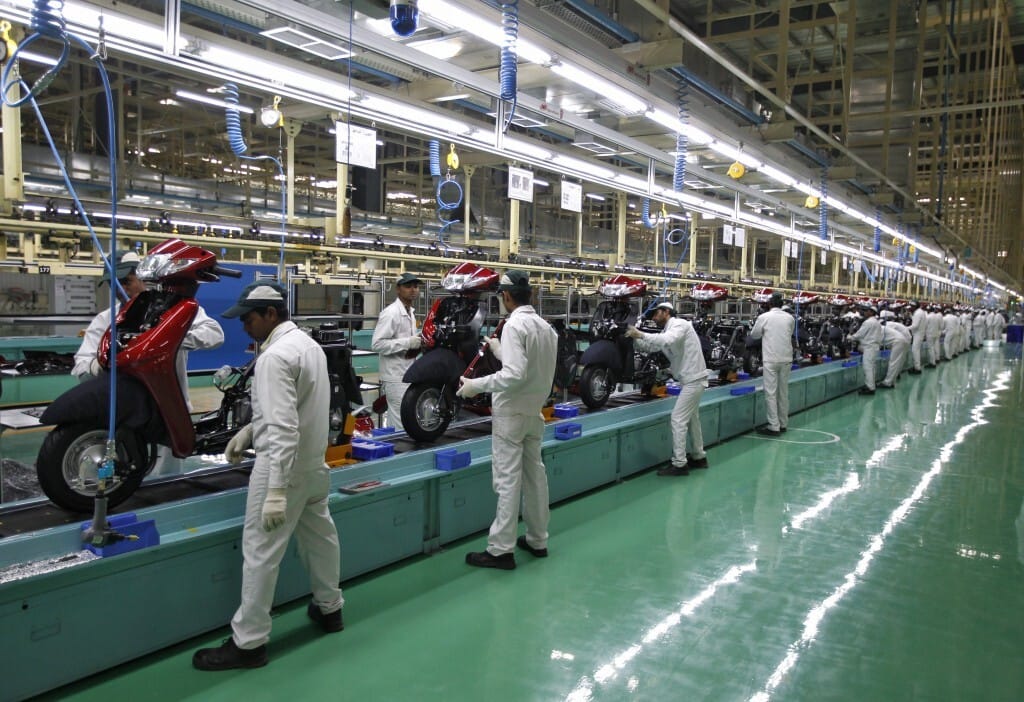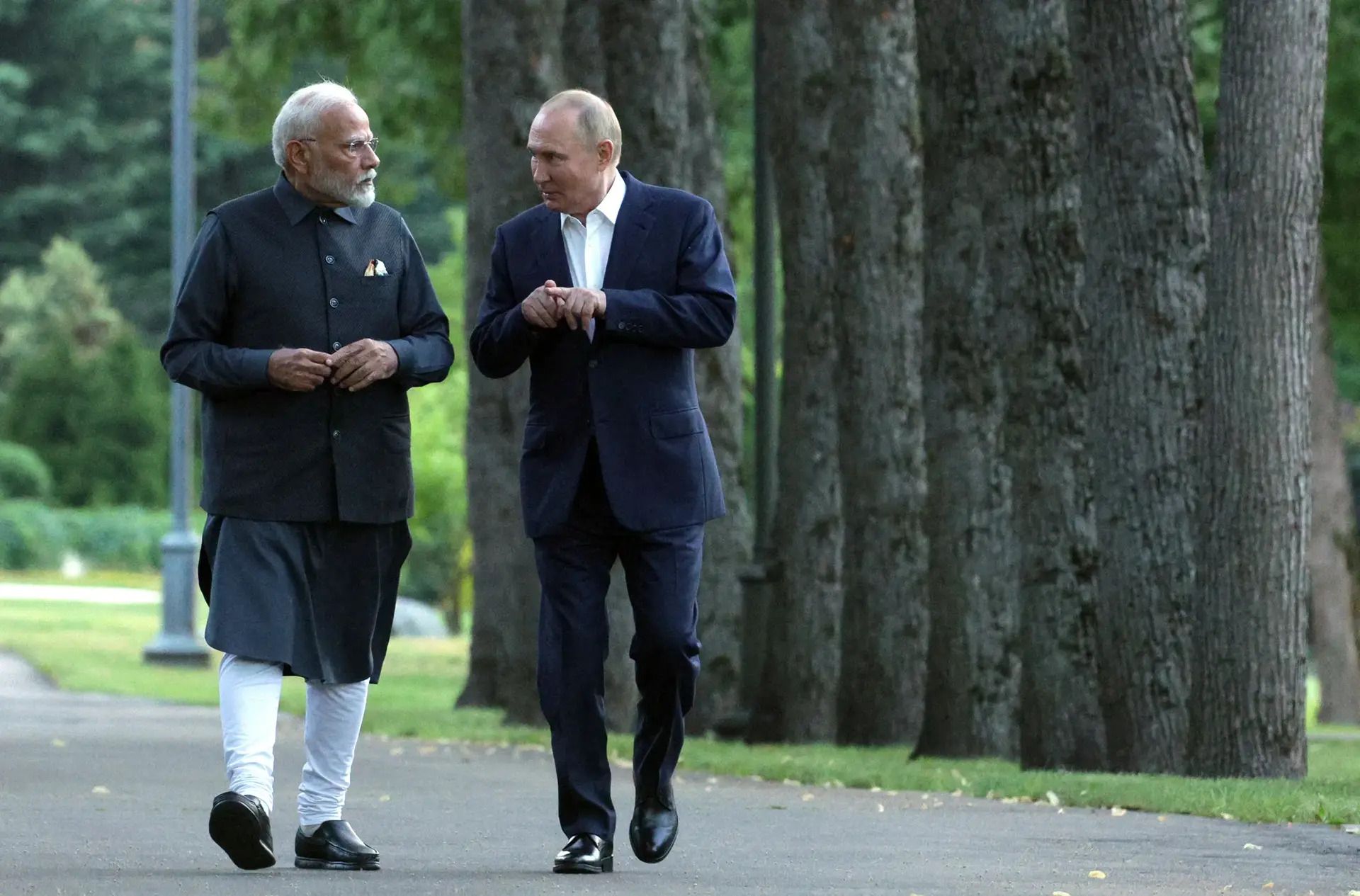- Samosa Capital
- Posts
- 📰India and Russia Sign Landmark Deal | Daily India Briefing
📰India and Russia Sign Landmark Deal | Daily India Briefing
Three stories on Indian markets that you can't miss.


Today’s deep dives: Modi skipped the ASEAN summit to avoid a Trump-Pakistan conflict. India’s industrial output rose 4 percent year-on-year in September. India and Russia signed a deal to co-manufacture passenger jets just weeks before Putin’s visit to New Delhi.
We want to talk to you! Just respond to this email and we’ll set up a time to learn more about how Samosa Capital can be more helpful in your work.
If you have any questions about India, fill out this form or reach out to Shreyas at [email protected]



Macro
Multi Commodity Exchange of India halted trading for several hours due to a technical glitch, delaying the session until midday as operations shifted to a disaster-recovery site.
India’s bumper IPO market saw gains shrink despite a record-setting primary issuance year, as investor caution grows and the initial euphoria around new listings begins to moderate.
Indian equities opened higher on Tuesday after strong corporate earnings, with the Nifty and Sensex edging up in early trade. Analysts warned gains may moderate as traders book profits ahead of major central bank and policy announcements.
Foreign investors’ holdings in Indian equities climbed to a record as stable interest rates, firm growth, and a resilient rupee boosted sentiment. India’s improving macro outlook and central bank credibility continue to draw long-term global capital inflows.
Equities
Tata Trusts voted against the reappointment of Mehli Mistry, signalling a boardroom shake-up in one of India’s leading philanthropic institutions and marking the end of his long-standing role.
Adani Green Energy posted a sharp rise in quarterly profit, boosted by higher solar and wind power generation. The strong performance highlights India’s accelerating renewable energy push amid global investor focus on clean-power leaders.
Tata Capital reported higher quarterly profit in its first earnings since listing, driven by robust retail lending and lower credit costs. The performance signals strong investor confidence as the group expands its footprint across consumer and infrastructure finance.
Alts
OpenAI is rolling out a year-long free subscription for its ChatGPT Go service in India, aiming to capture millions of new users in its second-largest global market. The move underscores OpenAI’s aggressive push into emerging markets amid intensifying competition.
Indian conglomerates are ramping up acquisitions of high-value European assets, lured by softer valuations and easier financing abroad. The surge in outbound M&A highlights India Inc’s expanding global ambitions amid moderating domestic growth and shifting geopolitical winds.
India’s state refiners are reworking crude supply plans after U.S. sanctions on Russian producers, pausing some orders while sourcing from the Middle East and Africa. The move underscores how global politics is reshaping New Delhi’s energy security strategy.
Delhi will begin cloud seeding operations to trigger artificial rain and reduce choking air pollution ahead of winter smog season. Officials hope the experimental method, first of its kind at this scale, can temporarily improve air quality as crop burning worsens in northern India.
Advent International’s local arm sold its remaining stake in Aditya Birla Capital through open-market transactions, marking a complete exit from the Indian financial firm. The sale follows strong stock performance post-listing and reflects private equity’s rotation into new opportunities.
Policy
India’s telecom and banking shares are gaining as new government policies and regulatory clarity bolster investor confidence. Fresh incentives, infrastructure spending, and digital reforms are expected to drive earnings and sustain sector momentum.
India’s Central Electricity Regulatory Commission has launched a probe into an energy trading platform over alleged insider activity and price manipulation. The investigation underscores the regulator’s intensified scrutiny of market conduct following recent volatility in electricity contracts.
India’s markets regulator SEBI proposed new measures to simplify and reduce mutual fund fee structures, aiming to make investments more transparent and cost-efficient. The move could enhance retail participation and ease compliance burdens for fund houses.

Institutional-Grade Opportunities for HNW Investors
Long Angle is a private, vetted community connecting high-net-worth entrepreneurs and executives with institutional-grade alternative investments. No membership fees.
Access top-tier opportunities across private equity, credit, search funds, litigation finance, energy, hedge funds, and secondaries. Leverage collective expertise and scale for better terms.
Invest alongside pensions, endowments, and family offices. With $100M+ invested annually, secure preferential terms unavailable to individual investors.
Reach out to [email protected] to reach our audience and see your advertisement here.

1. Modi Skipped ASEAN Summit to Avoid Trump-Pakistan Clash

Leaders at 2025 ASEAN Summit
Modi’s absence from the ASEAN summit in Malaysia is drawing fresh scrutiny after officials said he stayed away to avoid a potential diplomatic flare-up with U.S. President Donald Trump over Pakistan.
People familiar with the matter told Bloomberg that New Delhi feared Trump might revive his controversial claim that he brokered a ceasefire between India and Pakistan earlier this year, a statement India has repeatedly denied. With a key state election in Bihar just days away, Modi’s team worried any public exchange over Pakistan could damage his political standing at home.
Tensions between New Delhi and Washington have grown since the border conflict with Pakistan in May, followed by Trump’s 50 percent tariff on Indian exports, half of which he tied to India’s continued purchases of Russian oil. Trade negotiations have stalled, and a recent phone call between the two leaders reportedly failed to ease friction.
Trump, meanwhile, reignited controversy during a visit to Tokyo, again boasting of his role in “preventing a nuclear war” between India and Pakistan. Pakistan has praised Trump for his mediation efforts, while Modi’s silence has drawn criticism from opposition figures like Rahul Gandhi, who accused him of being “frightened of Trump.”
Modi instead delivered a virtual address to ASEAN, leaving Foreign Minister S. Jaishankar to handle diplomacy in Kuala Lumpur — a sign of India’s cautious approach to managing a now unpredictable U.S. relationship.
2. India’s Industrial Output Expands 4 percent in September

India’s industrial output rose 4 percent year-on-year in September, slightly above expectations and signaling resilient factory activity despite external headwinds. The figure, released by the Ministry of Statistics on Tuesday, compared with a revised 4.1 percent rise in August and beat economists’ forecast of 3 percent.
Manufacturing, which makes up over three-fourths of total output, climbed 4.8 percent, supported by strong production of consumer durables like automobiles and electronics, which surged 10.2 percent. Capital goods output, a proxy for investment demand, grew 4.7 percent, underscoring steady business confidence despite recent trade frictions and high tariffs from the U.S.
By contrast, mining activity slipped 0.4 percent, reflecting weaker commodity extraction, while electricity generation eased to 3.1 percent from 4.1 percent in August. Consumer non-durables, including food and toiletries, continued to struggle, contracting 2.9 percent after a 6.4 percent fall in the previous month — a sign of uneven demand recovery in rural areas.
For the first half of FY2025–26 (April–September), industrial output expanded 3 percent, down from 4 percent a year earlier, as energy shortages and sluggish export orders weighed on momentum.
Economists said September’s data supports a “soft-landing” narrative, slower but stable growth, with manufacturing remaining the key pillar of India’s economy. The pickup in consumer durables hints at a festive-season demand boost, but sustained weakness in basic goods and exports may limit upside in the coming months.
3. India, Russia Sign Jet Manufacturing Pact Ahead of Putin Visit

Modi and Putin in July 2024
India and Russia have inked a landmark agreement to jointly produce passenger aircraft, underscoring the resilience of their strategic partnership despite mounting U.S. pressure. State-owned Hindustan Aeronautics signed an accord with Russia’s United Aircraft to manufacture the SJ-100 regional jet in India — a move that could mark the country’s first full-scale civilian aircraft production.
The pact, announced just weeks before Russian President Vladimir Putin’s December visit to New Delhi, gives HAL the rights to build SJ-100 twin-engine aircraft for Indian carriers. While financial details remain undisclosed, the deal aligns closely with Prime Minister Narendra Modi’s “Make in India” push to expand local manufacturing and strengthen India’s aviation ecosystem.
The project arrives at a politically charged moment. Washington has intensified scrutiny over India’s energy and defense ties with Moscow, imposing 50 percent tariffs on Indian goods partly in retaliation for Russian oil imports. Yet, the pact signals that India is unwilling to let geopolitical friction derail long-standing defense and technology collaboration with Russia.
For New Delhi, the partnership not only supports domestic industrial growth but also promises to enhance short-haul connectivity, as India plans to double its airports to 350 by 2047. Still, questions remain over HAL’s production capacity, given its ongoing challenges in meeting military aircraft demand.
The timing of the deal, just ahead of Putin’s trip, highlights both nations’ intent to reaffirm their decades-old relationship amid a shifting global order.
How helpful was today's newsletter? |
See you tomorrow.
Written by Eshaan Chanda & Yash Tibrewal. Edited by Shreyas Sinha.
Sponsor the next newsletter to reach tens of thousands of U.S.-based business-savvy professionals. Reach out to [email protected].
Could your business use expert insights to power growth in India? Reach out to [email protected] for a free introductory call.
Disclaimer: This is not financial advice or recommendation for any investment. The Content is for informational purposes only, you should not construe any such information or other material as legal, tax, investment, financial, or other advice.

